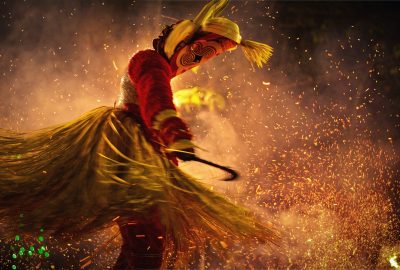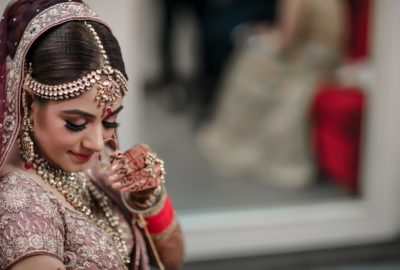On the Marwari marriage, several necessary rites happen in the early morning. The bride’s parents must observe the fast until the end of the wedding.
Thamb Puja
A priest from the groom’s family performs puja at the bride’s house. This rite means that the new union will be as strong as the foundation of the house.
Bhaat Bharna
The presence of a maternal uncle at the celebration cannot be overestimated. It is assumed that he takes over a significant part of the wedding expenses since the bride after the wedding does not claim to inherit. The parents of the newlyweds meet him on the doorstep of the house. He brings a lot of gifts for sisters and brothers.
Telbaan
This ceremony involves a visit to the bath. A pre-prepared paste of turmeric, cottage cheese, olive or mustard oil is applied to the face, hands and feet of the bride and groom. After the bride/groom is given sweet pancakes called “gungra”.
Havan
It is a ritual when a fire is lit in a havan (small pit) and offerings are made. This fire is considered very sacred. Priests sit nearby, chant mantras and offer ghee. Other liquid objects or mixtures also pour into the fire.
Gharva
The bride’s family performs a puja in honor of the goddess Parvati. Clothes and jewelry for decorating the Goddess were sent by the groom’s family. They also send clothes and jewelry to the bride.
Korath
At Marwari marriage this ceremony is very symbolic. Elders from the bride’s family, along with their priest, visit the groom’s house to invite him and his family to the wedding venue.
The priest, traveling with the bride’s family, forces the groom to do puja from the wedding invitation. In exchange, the groom’s family will give a symbolic amount of money, as well as serving snacks and drinks to guests.
After that, you can go to the wedding venue.
Nikasi
These are rituals that must be performed before going to the bride. A mother feeds her son with a moon mixture (a type of lentil), rice, sugar and ghee from a small cup. The groom’s family should carry a decorated ceremonial umbrella, a sword, 2 floor pillows, garlands and a paan to the wedding venue according to the Marwari tradition.
The groom leads the procession of his friends and relatives to the meeting place.
Baraat Dhukav and Varmala
The groom and his entourage arrive in place. The bride’s father and other members stand with garlands at the entrance to greet the group. The mother of the bride greets the groom, anointing him. After that, the groom enters the room. Then the bride comes and puts 7 sukhalis on the head of the groom – a type of snack, after which the bride and groom exchange garlands.
Gathbandhan
This is a ritual in which the fabric turned around the groom’s waist is tied to the end of a veil or chunri covering the bride’s face. This symbolizes the emergence of a single whole.
Kanyadaan
This is a ceremony in which the bride’s father passes her to the groom and asks him to take responsibility. The bride also accepts the family of her relatives as her own and changes her last name. She also recognizes that all the problems of her husband’s family are her own, and she is committed to always maintaining her reputation and doing everything to make them feel happy.
Panigrahan Sanskar
The bride’s hand is placed in the groom’s hand. This symbolizes the willingness of the groom to assume the responsibility of the bride, as well as the union of the minds and bodies of both.
Saptapadi/Phere
At Marwari marriage, the bride and groom walk around the sacred bonfire 7 times. The first three rounds, or “pheras,” are led by the bride, and in the next four by the groom.
With each round, a potential couple takes a solemn wedding vow, which they must fulfill until the end of their days. This is the Vedic ritual. After this ceremony, the bride and groom are considered husband and wife.
Ashirvad
After the final sacrifices to the holy fire, priests and elders on both sides bless the bride and groom for a blessed marriage
This marks the end of the wedding rituals.



